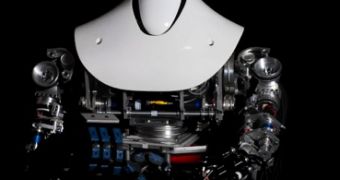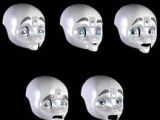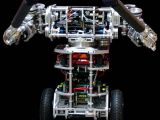Nexi is a MDS small humanoid robot, designed by MIT Media Lab's Personal Robotics Group, capable of expressing facial emotions much in the same way as humans do. MDS actually stands for 'Mobile/Dexterous/Social', meaning it can perform a multitude of tasks, by moving around on its dynamically self-balancing wheels, with its fully compatible arms that can grab and lift objects up to 4.5 kilograms in weight.
Nexi was specially designed to mimic human movements at roughly the same speed. The head and face were created by the Xitome Design and MIT. The neck mechanism has four degrees of freedom and its face is able to express emotions through an array of movable features, such as the eyes, mouth, eyebrows and so on.
Two CCD cameras placed inside each eye gives it binocular vision of its surroundings, while an Active 3D infrared camera and microphones located in the forehead allows it to make 3D maps of the environment in which it is placed. Nexi was build on a previous robot design created at the Laboratory of Perceptual Robotics UMASS Amherst, the uBot5 mobile manipulator robot, which also uses a two-wheel dynamically balanced system to move around. Nexi is powered by lithium-ion batteries and controlled by an onboard personal computer working on a Linux operating system.
According to its designers, "the purpose of this platform is to support research and education goals in a human-robot interaction, teaming, and social learning." Robots like Nexi could one day work alongside with people in their homes. However, before becoming commercially available, Nexi will be used for research into human-robot interactions.
MIT Media Lab's website also reveal that, aside Nexi, three other small humanoid robots were developed, each of them with a fair amount of mobility, dexterity and human-centric communication and interaction abilities.

 14 DAY TRIAL //
14 DAY TRIAL // 

